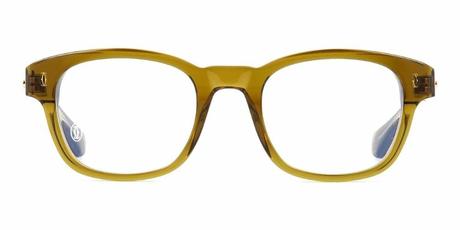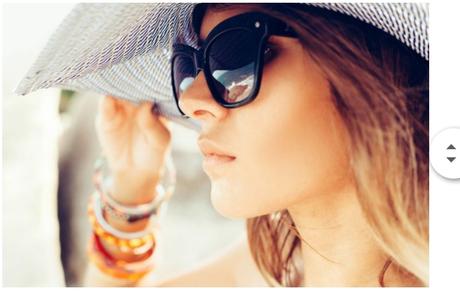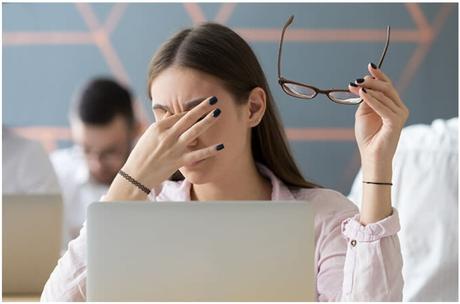Nothing is as important as personal protective equipment in the workplace. Wearing protective goggles is intrinsically important, as injuries to the eyes at the workplace are one of the most common occupational accidents.
Around 15,000 accidents at work in the area of the eyes per year underscore the need to use protective goggles.
What is the difference between standard glasses and protective glasses?
All normal prescription glasses are called corrective glasses. What is the difference between them and prescription safety glasses? Private glasses are designed for design, fashion, comfort and viewing pleasure. In the case of protective goggles for people who wear glasses, there is also full protection for the user, because the risks for users are significantly greater when they are used in hazardous areas. Private glasses can break and splinter and are therefore an increased risk of accidents when used in hazardous areas. The materials used for protective goggles, both for the lenses and for the frames, must meet the high requirements of the work environment satisfy. They are designed for maximum user protection. They prove their efficiency, for example, by passing a bullet test. The materials used underline their potential through chemical resistance and resistance to alcohol and solvents.

Particularly noticeable to laypeople is the design of protective goggles that differs from that of private goggles. These also close off the eye socket at the side with the so-called side protection. Why do protective goggles have side covers / flaps or wide temples? There is a mechanical, toxic or radiation hazard for our eyes not only from the front but also from the side. Due to their special design, protective goggles offer protection for the entire eye area or the eye socket. This feature of protective goggles also makes a significant contribution to protecting the eyes.
Around 2/3 of Americans older than 18 need Dita glasses because they have ametropia. Certified protective goggles for spectacle wearers are made with lenses in the individual prescription of the user and with full protective function. These safety glasses for people who wear glasses are also called prescription safety glasses. For the care of users without ametropia there are protective glasses without visual acuity correction. These are also called planar safety glasses and have the optical effect of 0 diopters.
What do DIN EN 166 and DIN EN 172 mean as standards for safety glasses?
Standards developed at international level are, for example, ISO standards or the European standards. The meaning of the abbreviation DIN as an industrial standard is out of date.
The origin or standard is represented by the standard code or number.
- DIN: (e.g. DIN 166) DIN standard that is solely or mostly of national relevance, or that is produced as a precursor to a supranational document.
- The count number has no classifying meaning.
DIN EN 166 describes the performance requirements for eye protection as certified personal protective equipment and its standard-compliant labeling. Safety glasses according to DIN EN 166 consist of glasses frames, also known as supporting bodies, and protective glasses, also known as lenses.

The DIN EN 172 indicates the performance requirements Personal eye protection on visors with filter effects such as sun protection filters for industrial use as well as your standard-compliant labeling.
How do I recognize certified safety glasses?
Both certified supporting bodies (frames) and viewing panes (glasses) require a standard-compliant marking. For this purpose, a micro-engraving is made in the viewing panes. Only protective goggles with standard-compliant labeling are also certified protective goggles with a protective function. To clarify: If a certified support body (spectacle frame with protective function) is glazed with a non-certified spectacle lens without standard-compliant labeling, these glasses have no certified protective effect and liability.
Who has to pay for prescription safety glasses?
If you have activities in the danger area and you wear glasses, you are entitled to protective glasses for glasses wearers to be provided by the employer.
The Occupational Safety and Health Act specifies that workplaces should be designed in a way that there should be no danger to the staff. Personal Protection Equipment (PPE) should be mandatory to use for every employee; employer is responsible for it.
According to DGUV rule 112 192, over-glasses are only permitted for use for a few minutes. Example: Visitor guidance through production yes - daily use no.
Your occupational safety specialist will advise you which hazardous areas must be taken into account on site.
Pretavoir has perfected the procurement process for employers. You can purchase any safety glasses for glasses wearers regardless of the version of the lens type (single vision, bifocal, varifocal or computer workstation lens) up to a strength of +/- 9 diopters at a uniform price. There are no challenges from elaborate cost estimates and procurement is easy to budget for your company.
Safety glasses are all DIN EN tested and marked. In addition to the various mechanical strengths, we also offer protective glasses with filters in accordance with DIN EN 172. Pretavoir enables high-tech optics as personal protective equipment. The highest quality, excellence and quality create maximum wearing comfort and visual comfort. Our complaint rate of 0.3% confirms this.
Computer use requires eye protection.
Wearing glasses that shield your eyes from computer displays is a wonderful idea, but there are five additional things you can do in addition:

- It's all about the lighting - your digital screen should be as bright as your immediate surroundings, which may require altering the brightness and contrast of your screen as well as lowering the interior illumination.
- Remove glare - glare happens when light reflects off your screen, so try to minimise it by facing your screen away from windows and using an anti-glare screen.
- Increase the size of your screen - bigger displays reduce eye strain, but they must be seen at the right distance. For example, your computer screen should be 20-26 inches from your eyes.
- Take a break - every 20 minutes, take a 20-second break by focusing on anything 20 feet away.
- Moisturize - looking at a computer lowers how often you blink, and blinking keeps your eyes lubricated, so take a 20-minute break every 20 minutes to slowly blink 10 times, and use hydrating eye drops if necessary.

